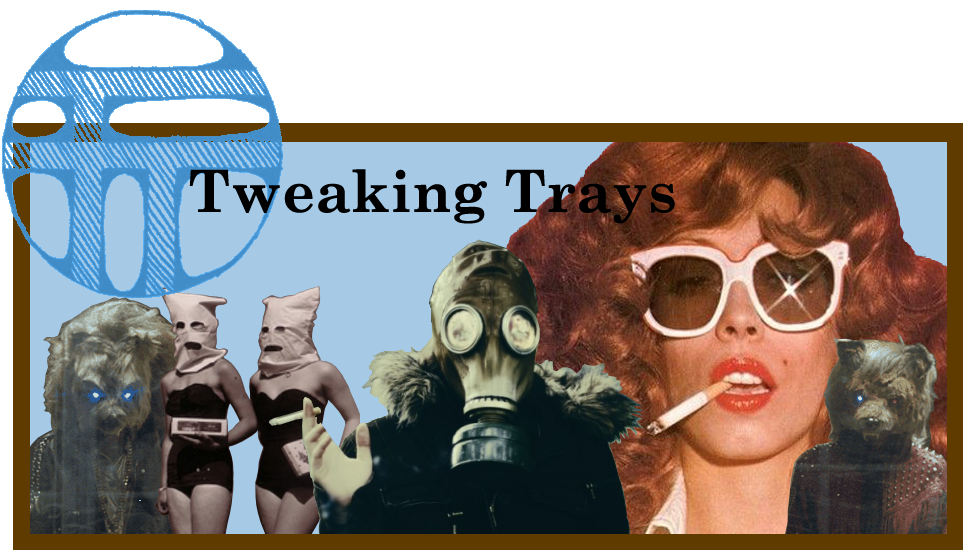On Friday, February 5th, the Museum of Contemporary Art Detroit (MOCAD) held the opening reception of its spring exhibition: For the blind man in the dark room looking for the black cat that isn’t there. The party was met with hundreds of guests, food, drinks and live entertainment. Indie band Deastro and special guest Shooting Spires took the stage, adding a local music touch to the celebrations. [http://www.mocadetroit.org/ ]
The Opening:

.
(Photos Courtesy of MOCAD)
The Exhibition:
When Charles Darwin came up with his Theory of Evolution, he marveled in his own brilliance and tremendous ability to describe the physical world around us. The proof of his work could be seen, quite literally, in the plant and animal species that he studied. He mocked the mathematicians, who are bound by axioms and only able to express the universe in speculative terms, claiming that their search for truth was like that of a blind man in a dark room looking for a black cat that isn’t there. Artists, however, seem to have sided with math in this case, embracing speculation and savoring the ethereal. This exhibition speaks to their cause and in an attempt to demystify art they not only allow but encourage curiosity and an almost child-like wonder. The experience of not knowing is crucial, and a sense of unlearning is necessary for the growth of knowledge. This show is dedicated to the playfulness of being in the dark. Much like Socrates, the artist proclaims: “I know that I know nothing.”
A replica of which is now suspended above MOCAD’s front desk, this is Mariana Castillo Deball’s Klein bottle piñata. A Klein bottle, in math, is a non-orientable surface that has no recognizable inner or outer sides, and no boundaries. In other words, it can’t exist in the real world. Yet here it is, a strange principle of geometry and math, turned into one of the most playful structures imaginable: a piñata. But a piñata is good for just one thing of course, and near the end of the exhibition this work of “art” will be filled with candy and smashed to pieces by visiting children at one of MOCAD’s Family Days. I think this represents the message of the show as a whole. Art doesn’t have to be confusing and full of deep meanings. When people enter an art museum, particularly a contemporary art museum, they immediately begin to analyse and dissect the work, always worried about “getting it”. For the blind man… seeks to reverse that urge, and allow visitors to merely enjoy the art, to engage and have fun with not knowing and not understanding. You can search and search for answers and not find anything, but as long as you had fun along the way, who cares?
This is a mixed media installation by Dave Hullfish Bailey: To do with a wide spot along a dusty road crossing a dry channel, between the old end of Old Red and the dead end of the New West (working prototype). Much like the exhibition as a whole, this piece definitely exists to poke fun at itself. Imagine a man travelling through the desert researching the land with his own moving laboratory-library. This portable workstation has everything he would need on such a voyage, all contained within a trailer with a Swiss army knife-like construction of tools and equipment. Yet, this research lab is hopelessly inefficient; it’s absolutely ridiculous. It would never work this way, with odd instruments and structures awkwardly attached and connected to the trailer, a mismatch collection of maps and tables at odd angles, and a truly horrendous method of organizing samples and results. It is a Swiss army knife gone horribly, horribly wrong. Even so, this is the point. Like children playing with Lego blocks, fantastic (but impossible) things can be imagined and built, and there is no other purpose than that.
Matt Mullican’s room is where most of my time was invested during the week of installation. Hundreds of works on paper, ranging from 1971 to 2009, cover three walls from floor to ceiling. It reads like a book across the wall, or perhaps more accurately a mathematical proof on a blackboard. Instead of words and numbers though, images, symbols and ideas dance around the room. Scattered colors and form lead both the eye and the mind down a track of logic and speculation–truly the artist thinking out loud, his thoughts spreading out and blanketing the space.
There are many more incredible pieces in the show, which runs until April 4th (which just so happens to be the day after Hash Bash in Ann Arbor), and I would strongly recommend coming by to check it out. General admission is always free, but donations are gratefully accepted. The museum store is now up and running, too, so there is some really unique merchandise available. There is a lot to see and explore: a man who can never forget things, a pound of strawberries on a wall, and of course, the dark room itself. Other works include a film which follows the long journey of two artists in a rat and bear costume and a board game without any rules but your own. Maybe the most striking, however, is sound piece in which a French artist interviews his cat on topics of art culture. Nothing better represents the exhibition’s theme than his most thought-provoking response:
“Meow!”











1 comment:
I think I've read this somewhere before... but i like the hash bash reminder :)
Post a Comment